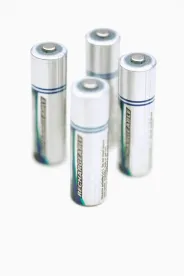Summary: The U.S. Department of Transportation’s Pipeline and Hazardous Materials Safety Administration issued a proposed rule that would harmonize U.S. hazardous materials regulations with international hazardous materials transport standards. Among other things, the proposal would change certain proper shipping names, hazard classes, packing groups, special provisions, packing authorizations, air transport quantity limitations, and vessel stowage requirements and incorporate by reference various international technical standards. Significantly, PHMSA proposes to adopt into binding U.S regulation the updated hazard communication requirements for the transport of lithium batteries (including equipment containing such batteries) contained in the 19th Revised Edition of the United Nations Recommendations on the Transport of Dangerous Goods Model Regulations. Once finalized, these requirements will be mandatory for all U.S. shippers and transporters of lithium batteries. Although PHMSA has for the moment declined to incorporate into the U.S. Hazardous Materials Regulations the enhanced safety provisions for lithium batteries transported by aircraft contained in the 2015-2016 Edition of the International Civil Aviation Organization’s (“ICAO”) Technical Instructions as of April 1, 2016, the preamble to the proposed rule indicates that the Agency is considering adopting these provisions in a separate rulemaking. Comments on the proposed rule are due November 7, 2016.
On September 7, 2016, the Pipeline and Hazardous Materials Safety Administration (“PHMSA”) within the U.S. Department of Transportation (“DOT”) issued a proposed rule to harmonize the U.S. hazardous materials regulations (“HMR”), 49 C.F.R. Parts 171-180, with recent changes made to the International Maritime Dangerous Goods Code, the United Nations Recommendations on the Transport of Dangerous Goods Model Regulations (“UN Model Regulations”), and the International Civil Aviation Organization’s Technical Instructions for the Safe Transportation of Dangerous Goods by Air (“ICAO Technical Instructions”). 81 Fed. Reg. 61,742. The proposed rulemaking is a part of PHMSA’s ongoing process of periodically amending the HMR to maintain consistency with widely-accepted international hazardous materials transport standards.
PHMSA also proposes to incorporate by reference into 49 C.F.R. Part 171, Subpart C various standards and regulations from these sources and others, which would allow U.S. transporters to comply with current international standards, including the ICAO Technical Instructions’ new lithium battery requirements, in lieu of existing U.S. requirements. Because many changes to the international standards will take effect January 1, 2017, if the proposed rule is not finalized by that date, PHMSA plans to issue an interim final rule incorporating the UN Model Regulations and ICAO Technical Instructions into the HMR by reference, which would allow shippers to use the updated ICAO Technical Instructions for domestic air shipments.
Small Lithium Cell and Battery Marking Requirements
Of particular importance, the proposed rule amends the marking requirements for small lithium cells and batteries (including equipment containing such cells or batteries) in 49 C.F.R. § 173.185(c) to incorporate a new standard lithium battery mark for use across all modes of transport:

PHMSA would require the lithium battery mark for all modes of transportation (including air and ground). The mark would not be required on: (1) packages containing only button cells installed in equipment; and (2) consignments of 2 packages or less where each package contains no more than 4 cells or 2 batteries contained in equipment. PHMSA proposes to allow the continued use of lithium battery handling labels conforming to the current HMR requirements until December 31, 2018.
Other proposed changes for small lithium cells and batteries include eliminating the existing documentation requirement for shipments of small lithium cells and batteries and requiring small lithium batteries to be packed in rigid outer packaging.
Requirements for Lithium Batteries Not Qualifying for Small Battery Exception
For shipments of lithium batteries that do not qualify for the small battery exceptions in 49 C.F.R. § 173.185(c), PHMSA proposes to adopt a new lithium battery label in place of the existing label for shipments subject to full regulation as Class 9 miscellaneous hazardous materials. See proposed49 C.F.R. § 172.447.

PHMSA proposes to allow the continued use of class 9 labels conforming to the current HMR requirements until December 31, 2018.
PHMSA would also exempt certain low production runs and prototype batteries installed in equipment from testing and recordkeeping requirements when packaged and marked in accordance with the rule.
Other Implications
It is noteworthy that PHMSA has, at least for the moment, declined to propose adopting the enhanced safety provisions for lithium batteries transported by aircraft contained in the 2015-2016 Edition of the ICAO Technical Instructions, which became effective April 1, 2016. However, in the preamble to the proposed rule, PHMSA indicates that it plans to propose adopting these provisions in a separate rulemaking. See 81 Fed. Reg. at 61,747. If ultimately incorporated into the HMR, these enhanced safety provisions would prohibit the transport of lithium ion cells and batteries separate from equipment as cargo on passenger aircraft and require all such lithium ion cells and batteries to be shipped on cargo-only aircraft at not more than 30% state of charge. Although PHMSA asserts that adoption of the ICAO Technical Instructions would also “limit the use of the alternative provisions for small lithium cell or battery shipments under 49 C.F.R. § 173.185(c),” it is unclear how this would be so. See id.
Although the objective of the proposed rule is to harmonize U.S. regulation with international standards, under the Administrative Procedure Act and related statutes PHMSA must consider each proposed change to the HMR on its own merits, and independently evaluate the safety and economic impact of each provision before finalizing it. Accordingly, PHMSA is seeking input from industry regarding potential approaches to reducing the anticipated costs of the proposed rule while achieving the same or improved safety benefits. The comment period for the proposed rule closes on November 7, 2016.





 />i
/>i

